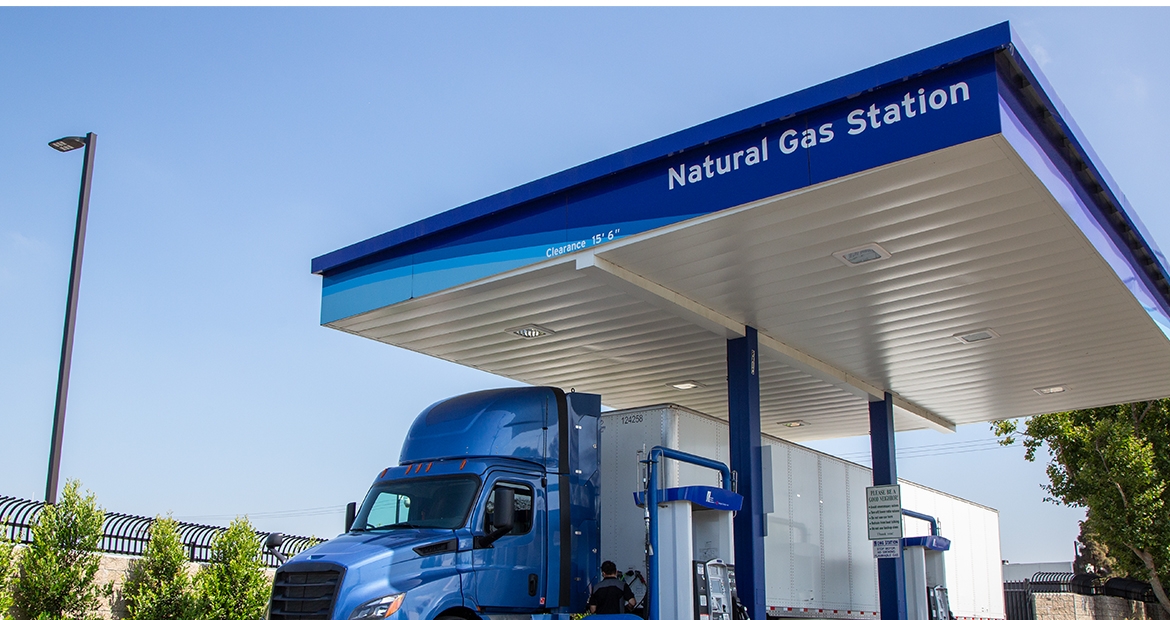What is the current state of the natural gas refueling infrastructure?
By Puneet Singh Jhawar, General Manager – Global Spark Ignited Business

In the United States, natural gas is the number one alternative fuel for commercial vehicles. It burns clean and it can help reduce greenhouse gas emissions. Switching to natural gas engines comes with many benefits, but let’s focus on their refueling infrastructure.
What are the different natural gas production facilities?
Natural gas production in the U.S. has nearly doubled in 20 years thanks to the Shale Revolution. Natural gas is abundant, relatively cheap, and widely available. This fuel provides natural gas engines with great economic benefits.
Methane from organic waste can be converted into renewable natural gas (RNG), which is a fully interchangeable alternative to traditional natural gas. The industrial production of RNG is experiencing a boom driven by a growing demand. In 2020, there were 157 facilities producing RNG. By the end of 2021, this number had grown to 230.
How much natural gas is available?
Natural gas has been used for decades in non-transportation applications. As a result, users and producers can rely on an extensive mid-stream and down-stream infrastructure. This includes pipelines for transportation between natural gas-producing regions and population centers. In most urban and suburban areas, dense distribution networks deliver natural gas into homes and businesses. If you lined up all of the natural gas distribution pipelines in the United States, it would equal 10 times the distance between Earth and the Moon.
Natural gas is widely available, but there are only about 1,500 public and private fueling stations in the United States, compared to 145,000 gasoline stations. Many fleets interested in this technology invest in a private fueling infrastructure so they can fuel up onsite before heading out on routes for the day. This can be a significant investment that not all businesses can afford. With that being said, natural gas vehicles are the least disruptive alternative power technology available today. No radical changes in vehicles or transportation infrastructure is required.
Many natural gas fuel suppliers are also willing to subsidize the fueling infrastructure and recoup the cost over several years with a slightly higher fuel price.
What do natural gas refueling facilities look like?
Businesses can choose from several types of CNG fueling stations, including fast-fill stations that receive low-pressure fuel from the local distribution network and discharge it rapidly into vehicles' tanks.
Time-fill stations are best suited for heavy vehicles with large tanks that refuel nightly at a central location. These stations receive natural gas at a low pressure from utility companies and the gas is compressed directly into the vehicle. Time-fill stations tend to be custom-designed. They are designed based on the total number of vehicles, their capacity and the time available to fill them, among other factors. Filling a vehicle at a time-fill station can take up to several hours.
Hybrid combination-fill stations also exist. They incorporate elements from both fast-fill and time-fill systems and offer both options, granting a great deal of flexibility.
LNG is a liquid form of natural gas that is typically used in long-haul trucking applications. LNG stations are less common than CNG stations, and they require specialized equipment and safety precautions due to the extremely low fuel temperature.
How many vehicles are using natural gas?
Natural gas use in motor vehicles has increased over the last six years. From 2016 to 2021, its use has increased by over 230%. New vehicle registrations have also seen growth. In 2021, businesses registered around 6,500 natural gas vehicles. That was a 3% increase from the previous year. There are 121,000 natural gas-powered vehicles on the roads in the United States. Cummins has produced over 85,000 natural gas engines for medium and heavy-duty vehicles. Natural gas engines are good for applications such as transit buses, school buses and garbage trucks.
If you want to learn more about other aspects of natural gas, don’t forget to also check our answers to frequently asked questions about natural gas engines. These answers cover topics such as cost, practicality, and feasibility of integrating natural gas into commercial fleets.
Never miss the latest and stay ahead. Sign up below to receive the latest in technologies, products, industry news, and more.
Author Profiles

Puneet Singh Jhawar, General Manager – Global Spark Ignited Business
Puneet Singh Jhawar is the General Manager of the global natural gas business for Cummins Inc. In this role, he is responsible for the product vision, financial management and overall performance of the natural gas business. Over his 14-year career at Cummins, Jhawar has cultivated successful relationships with a number of Cummins’ largest customers. Jhawar has extensive global experience, with roles based in the Middle East, India, Europe and the US.